Introduction
Since their introduction in 2013 by HGST (now Western Digital), Helium sealed HDDs have dominated the high capacity, nearline, segment due to their larger capacities and lower power consumption. The use of Helium has allowed the industry to reach 18TB of unit capacity by squeezing up to nine platters in the 3.5’’ HDD form factor, but that number is not expected to ever exceed ten. Therefore, to reach capacities much higher than 20TB, new inventive technologies are needed.
A startup, L2 Drive, believes its vacuum drive technology is the next logical step after Helium. By completely removing all gases (air or helium) from inside the drive enclosure and replacing the current load beam and flying heads design with a fully active suspension, L2 Drive estimates that it can further extend the benefits brought on by Helium and create an even more robust head-disk interface.
L2 Drive Suspension Technology
L2 Drive is proposing a number of new and innovative concepts for HDDs. Instead of the usual flying heads attached to flexible suspensions, L2 wants the heads to be carried by a rigid suspension, that it calls a Z-actuator. The Z-actuator is an active micro-mechanical device that monitors the distance and attitude, of head with respect to the media surface at about 60KHz, using capacitive probes, and adjusts the head’s position at about 15KHz via an elaborate piezo-electric actuator. The entire mechanism is controlled in a closed loop fashion by a dedicated controller not unlike the track following servo controller. This set up allows for positive control of the head’s position relative to the media over a wide range of distances (100 um down to contact) and pitch/roll angles (nose up, nose down or flat).
Since the heads are no longer flying on the media, all gases in the HDD enclosure can be evacuated leading to further reductions in disk flutter and windage on the actuator arm as well as idle power consumption. The Figure below shows idle power consumption vs RPM of an enterprise HDD in Helium and under a vacuum:
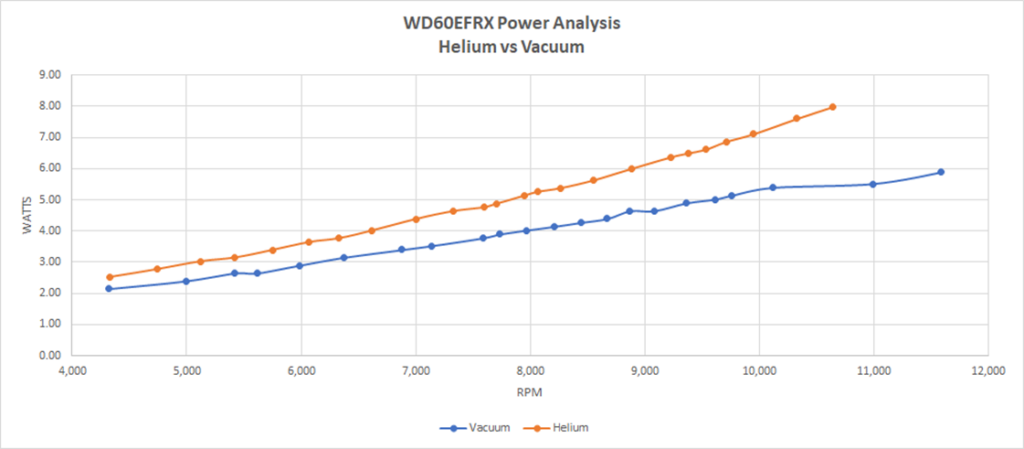
An initial design of L2’s Z-actuator is shown in the below:
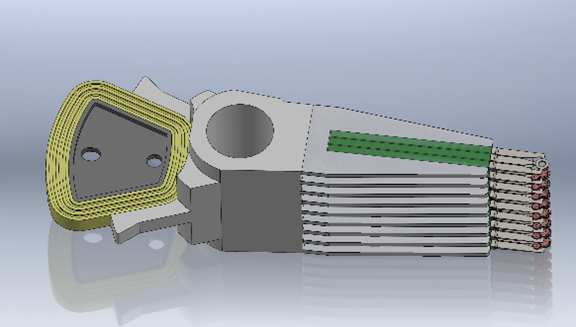

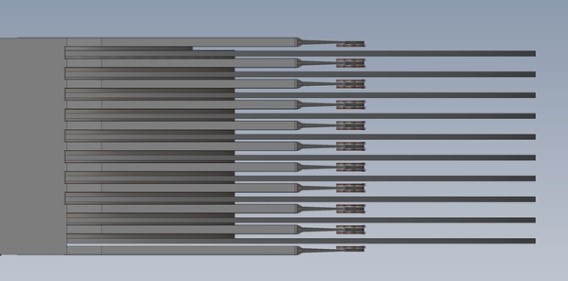
This Z-actuator design has three degrees of freedom enabling proper head-to-media alignment at all times. The 3 degrees of motion are performed by a first stage Z-actuator comprised of 6 piezo actuators where elevation, pitch and roll motions are achieved by differential actions between them:
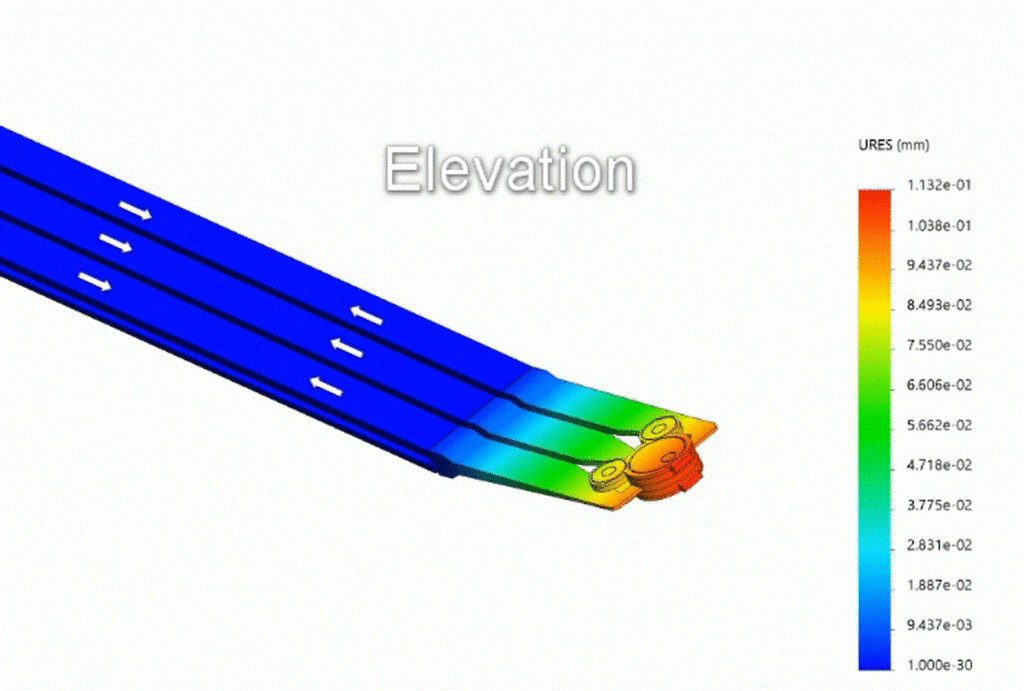
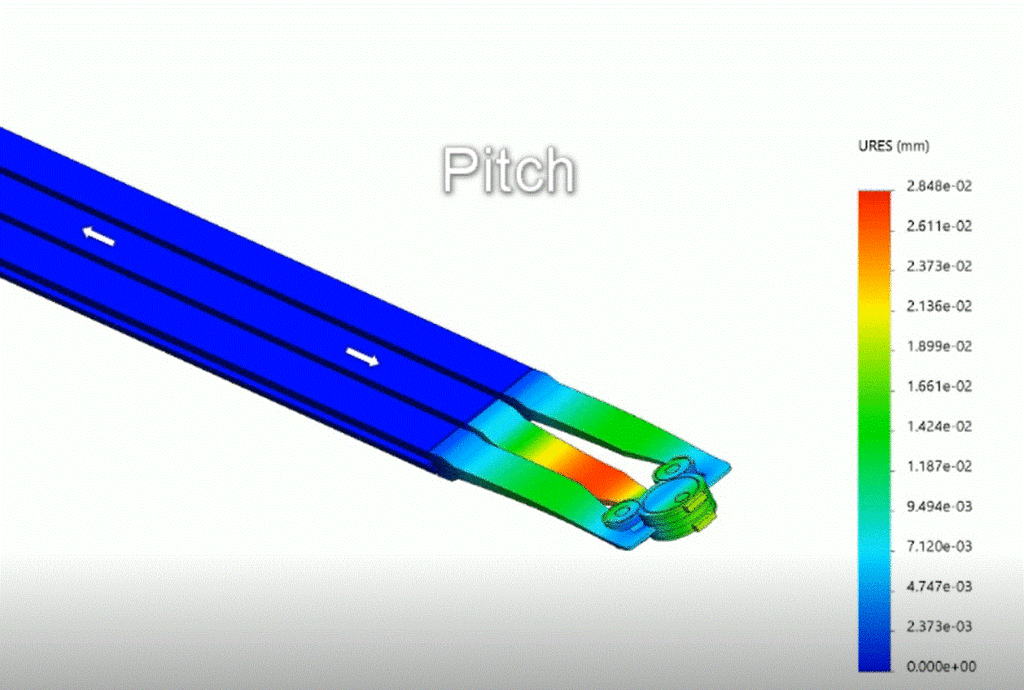
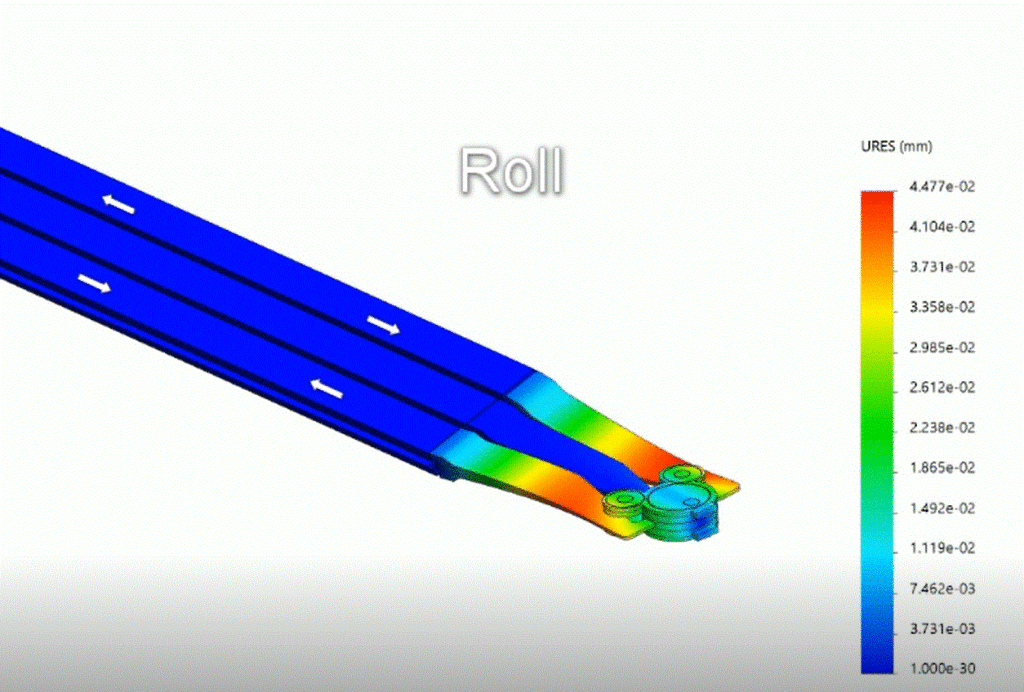
One of L2’s goals is to make head crashes a thing of the past. Once fully developed and debugged, the active suspension has the potential of eliminating, or at least drastically reducing, all contact between heads and media, thereby eliminating a failure mode that has plagued HDDs since their inception 60 years ago.
Other advantages of Active Spacing Control
Going from a passive suspension system to a fully active one will bring about numerous additional benefits. Below are but a few of these advantages.
No load/unload ramp: Since the Z-actuator is rigid and has full control over the head’s position, there is no need for a load/unload ramp at the OD of the disk stack. Eliminating the ramp would eliminate many of problems associated with it. It would open up valuable z-heigh that can be used for additional platters, and would also open up additional recording space, at the OD of each platter surface that is very valuable real-estate. It would also eliminate collisions between the platters and the ramp during operating shocks which is currently a major limiting factor for the number of platters in an HDD. A Z-actuator may still require a deflection limiting device to park the arm for better non-operating shock resistance, but such a feature far away from the disk OD and would not interfere with the disk stack.
Calibration and Self-Test: During the media defect mapping phase, an HDD using a Z-actuator can hover its heads at a higher than usual distance from the media (i.e. 500 nm) and in a nose down attitude while searching for media asperities. A nose down attitude protects the sensor from impact with asperities. The head-to-media distance can be reduced progressively throughout this procedure in order to map the tallest asperities first, minimizing the impact on the heads. Once all media asperities’ location and height have been mapped, the Z-actuator can avoid them simply by raising the heads high enough to clear each one. The point is an active suspension has more options in dealing with media defects than the current passive suspension.
Going to a fully active suspension also has the potential of shortening the Thermal Fly Height Control (TFC) calibration procedure. Since the head-to-media distance no longer depends on the radial position of the actuator arm (nor on the head’s skew angle), it is essentially eliminated as a variable in the TFC calibration table. In fact, an active suspension, is a self-calibrating device that automatically absorbs all the effects of miss-alignment between the arm and spindle axes of rotation.
Effects on TFC: In a vacuum, the TFC bulge would not cause any additional aerodynamic lift and separation that would require even more heating power. More significantly, there is no convection at the ABS! This might seem like a major disadvantage at first, but it is actually an advantage when considering the head’s entire energy balance. With no convection subtracting heat at a very high rate where it is needed the most to produce a bulge, the power requirement for the TFC becomes much lower in a vacuum. Therefore, the temperature gradient and the maximum temperature inside the head will be much lower.
Somewhat controversially, L2 believes that the TFC itself could be eliminated if HDDs used a fully active head suspension. Should this be possible, a major source of heat inside the sensor would be eliminated which could be a major advantage for HAMR.
Reduction in HMS: Removing all gases from the hard disk drive enclosure can also remove gaseous contaminants that cause corrosion of the disk surface. In addition, inside a vacuum HDD enclosure, particulate contaminates would have no transport mechanism and could easily be trapped not far from where they are generated. For this reason, L2 Drive is hopeful that the lubricant layer on the disks, that is meant to protect it from contamination and from the occasional impacts with the heads, can be either minimized or eliminated altogether. By the same token, the DLC layers on the heads and disk surface could be reduced or eliminated as well. This is by far is the most controversial claim by the company as it goes against decades of use of these protective layers. However, recent experiments by a major media manufacturer, showed that unlubricated media does not corrode during shipping when packaged under vacuum. Based on this evidence, let’s assume that we can reduce or eliminate some of these layers, then we can ask, what would be the advantages of doing so?
The main advantage of reducing or eliminating the protective layers would be to reduce the Head-to-Media magnetic spacing as these layers account for most of the HMS.
For Conventional Magnetic Recording (PMR and CMR), L2 estimates that a reduction in the HMS from approximately 7nm today to 5nm, while using its Z-actuator, could allow for as much as a 20% increase in the linear recording density after media optimization. This is because the lower HMS would give a higher head field while writing to the media and a stronger signal to noise ratio while reading back from it.
Beyond PMR and CMR, energy assisted recording methods such as HAMR and MAMR would greatly benefit from a reduced HMS. In fact, for both of these technologies, the coupling efficiency of the HAMR Near Field Transducer (NFT), and that of the MAMR Spin Torque Oscillator (STO) are highly sensitive to the HMS. The afore mentioned reduction in HMS from 7nm down to 5nm, the company estimates, would induce a 3x increase in the NFT coupling efficiency to the media, allowing for a similar reduction in laser diode power and consequently in a significant reduction in the maximum temperature inside the sensor.
Other advantages for HAMR: Other than a lower HMS, vacuum has many advantages for HAMR. The most obvious one is the elimination of the lubricant layer which would resolve the “write contamination” issue (lubricant breakdown and migration from media to heads under the high write temperatures). This problem is usually solved by allowing the Helium to contain some oxygen to oxidize away any lubricant deposits on the heads. However, the oxygen can also cause erosion of the write pole tip which is a major cause of HAMR head failure.
Because a z-actuator minimizes, or eliminates, all contact between heads and media, the HAMR media capping layer that is needed to protect the heads again the roughness of the FePt HAMR recording layer, would not be needed, thus eliminating one of the HMS penalties of HAMR.
Another HAMR problem resolved by vacuum is that of “media heat back”. According to a paper published by one HDD vendor, media heat back accounts for a 25-degree Kelvin rise in NFT temperature. Under a vacuum, and using a Z-actuator for a suspension, a HAMR head would not experience any media heat back since there is no convection between the head and the media.
Advantage for BPM: Finally, we can mention one advantage of Z-actuators for a future HDD technology which is Bit Patterned Media (BPM). Conventional flying heads cannot fly over a BPM medium unless the gaps between the bit islands are back filled with a filler. This last step is problematic and adds additional complexity to the already complex and costly process of making Bit Patterned Media. A Z-actuator would have no problem maintaining the head’s distance and attitude over a BPM because the capacitive probes, that measure the head-to-media distance, are much larger than a single bit island and therefore cannot resolve them.
Technological Challenges
The company is aware of many challenges that must be overcome for its technology to reach the product stage. First, the actuator design must be optimized to achieve the necessary total travel in each degree of freedom, while maintaining the necessary bandwidth to follow the media surface. L2 has performed a wide range of measurements to characterize media flutter and waviness to determine the necessary bandwidth to follow the media surface at different radial positions and spindle speeds. The results are that the necessary travel is about 150 micro-meters statically and 30um dynamically at about 5KHz. Second, a robust control system must be designed and implemented that can meet the goal of maintaining the heads at a constant distance from the disk without ever touching. This control system is very similar to the servo mechanism already in use in HDDs for track following, albeit with heightened requirements. There are also challenges with cooling the read/write heads in a vacuum. Paradoxically, early simulations show that maximum head temperatures might be lower for a head in a vacuum due to a major reduction, or complete elimination, of the heating power for the TFC. In addition, the company’s simulations show that conductive heat pipes are quite capable of evacuating the relatively low amounts of power dissipated in the read/write heads especially if most of the ceramic slider is replaced with much better heat conducting metals.
Other challenges of which the company is aware are related to thinning, or elimination, of the media and head coatings in order to reduce the HMS. Such coatings are there to protect the heads and the media from corrosive chemicals either present in the atmosphere or that might outgas from other parts of the HDD. However, since the company is proposing that the drives operate under a hard vacuum, such corrosive elements will be minimized; in addition, “getter surfaces” and/or electrostatic traps can be added inside the HDD enclosure to attract and absorb any contaminants.
Conclusion
The L2 Drive active suspension technology promises several improvements over the conventional suspensions of hard disk drives. The rigid Z-actuator allows for precise and positive control of the head-to-media spacing making for a more robust, and a more durable, Head Disk Interface. By allowing the use of vacuum in an HDD enclosure, it extends the benefits of Helium (lower power, higher track densities), but also has the potential to reduce the HMS, making MAMR more effective and potentially resolving many of the challenges associated with HAMR. It even promises to make BPM easier to manufacture. All these advantages open up a wide avenue of research and improvement of HDD technology that can even carry over to magnetic Tape!

